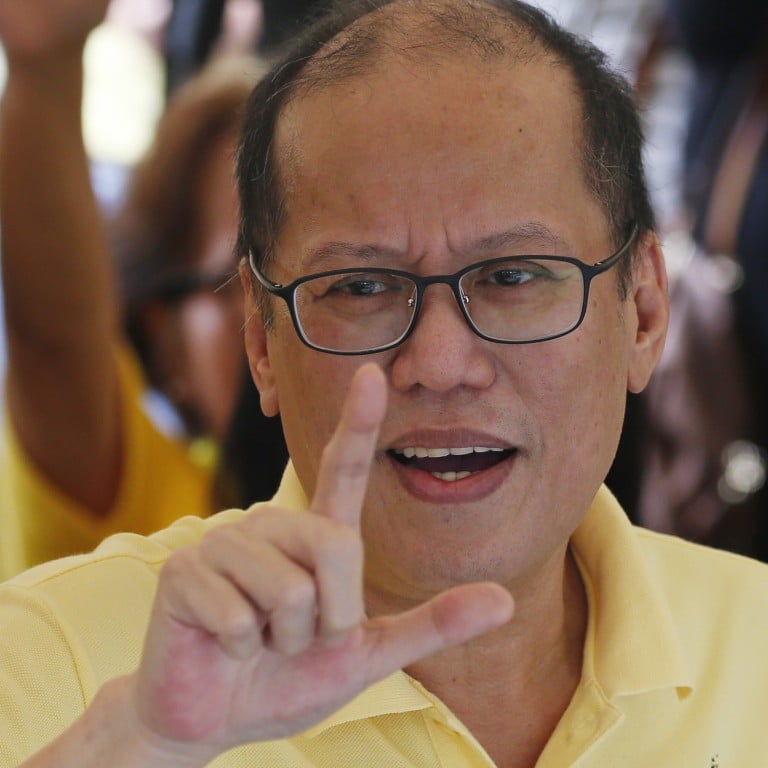
Benigno Aquino’s lost liberal ‘yellow’ legacy in the Philippines
- The late former president’s liberal reformist agenda was upended by his failure to address structural problems, which successor Rodrigo Duterte seized upon
- But his legacy of decency, commitment to democracy and national sovereignty may one day again prove relevant in a post-populist Philippines
This popular music-inspired symbol (“Tie a Yellow Ribbon Round the Ole Oak Tree”) refers to the welcome planned by supporters for his father, Benigno “Ninoy” Aquino Jnr, the leading opponent of the dictatorship of Ferdinand Marcos who was assassinated at the Manila International Airport after attempting to return from exile in 1983.
But even this limited sympathy is in stark contrast to the huge anti-government protests following his father’s killing and the national grieving after his mother, former president Corazon “Cory” C. Aquino, died in 2009, setting up Noynoy Aquino’s successful presidential campaign a year later.
But it should also be remembered that Noynoy Aquino easily won the presidency in 2010 by promising to take a “straight path” and clean up corruption – a popular message coming on the heels of the scandal-plagued administration of previous president Gloria Macapagal Arroyo.

01:14
Former Philippine president Benigno Aquino dies at 61
The 2016 election revealed that despite surface-level calm, a systemic crisis in the Philippines had been brewing for years. Although Aquino, like his mother, remained personally popular, the legitimacy of his liberal reformist agenda was undermined by its failure to address structural problems, root out institutionalised corruption, as well as its mismanagement of disaster relief and police operations (including the Manila hostage fiasco and 44 special force troops being killed in a bungled anti-terrorism mission).
How will Benigno Aquino be remembered? 10 events that shaped his presidency
Growth, although fast, was profoundly unequal, with high unemployment and an increase in self-reported poverty. His government dragged its feet on land reform, symbolised by the Aquino-Cojuangco family’s tenacious resistance to the court-ordered land redistribution of its huge sugar estate. Yet the problems of the Philippine justice system were the most damaging, contributing to a sense among many Filipinos that the Aquino government was incapable of enforcing the law.
These failures proved a boon for Duterte, who politicised anxieties about crime and social disorder, arguing that he was the country’s only shot at overcoming its enormous challenges and that progress would have to come at the price of liberal rights. Duterte duly launched a bloody “war on drugs” and began eliminating institutional barriers to his agenda while curbing critical media.

But in some respects there was also considerable continuity between Duterte and Aquino. Duterte’s mother was a strong supporter of Cory Aquino, who appointed Duterte as vice-mayor of the southern city of Davao, setting him up for a successful mayoral and ultimately presidential run. Duterte refused to push a draft constitution putting strict limits on political dynasties – not surprising as he, like Aquino, is from a prominent political family, with his own daughter now seen as a leading candidate to succeed him. Duterte also deferred to market-friendly technocrats, underfunding social welfare initiatives which has contributed to continuing high poverty levels.
Duterte for Philippine vice-president? ‘Maybe’, he says
It seems unlikely that a candidate claiming Noynoy Aquino’s “yellow” mantle will gain significant support in the 2022 presidential elections as there is little sign of a backlash against the Duterte administration despite its overly militarised response to Covid-19 and concerns about the future of the country’s claims to what it terms the West Philippine Sea. Over 90 per cent of respondents in a recent survey said they still support Duterte despite his mishandling of the pandemic.
But Noynoy Aquino’s legacy of decency, commitment to democracy and national sovereignty may one day again prove relevant in a post-populist Philippines.

